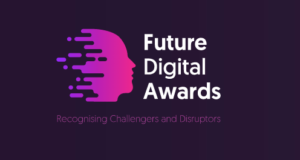RedSeal Named Platinum Winner for Best Network Protection Solution
Security Today | March 18, 2020

Security Today | March 18, 2020

CXO Insight ME | March 2020 (Pages 36-37)
Dr. Mike Lloyd, CTO at RedSeal, on how to protect your supply chain from cyberattacks.
“The supply chain combatted the challenge of repeatable quality through standards and audits – organisations establish baselines of what it takes to make a reliable product, and then build the supply chain around those who can meet the standard. The time has come for comparable efforts around cybersecurity and digital resilience across the supply chain.”
ITProPortal | March 18, 2020
In my travels, I’ve met cybersecurity professionals from many different backgrounds. That’s not so surprising – it’s a relatively new profession only recently taught in universities, and it takes on the order of ten years of on-the-job training to become an expert. Most seasoned cybersecurity veterans came from some other discipline. I moved into cybersecurity from epidemiology, studying how disease spreads. There are some surprising and interesting parallels between cybersecurity and epidemiology – starting from the point that most people really don’t want to talk to you about the icky stuff that you spend your time on until they face a real crisis and suddenly demand answers!
Security Today | March 18, 2020

Morning Consult | March 17, 2020
By Ray Rothrock, RedSeal CEO
On March 11, the Cyberspace Solarium Commission released its long-awaited report, which provides more than 80 policy recommendations for “defending the United States in cyberspace against cyberattacks of significant consequences.” While the report is over 180 pages, Senator Angus King (I-Maine) said the report can be summed up in four words — define, develop, defend and deter. I would simplify this further, as these four words can be condensed into one concept: digital resilience.
FedScoop | March 16, 2020
Agencies that have built network infrastructure over decades may not be doing enough to manage basic cyber-hygiene practices and stay ahead of modern threats, cautions a new report.
When out-of-date configuration rules lurk on networks, attackers essentially have a back door to walk into government systems. However, modern network modeling platforms, capable of integrating into existing infrastructure, can help agency IT departments identify and manage cyber risks and accelerate essential hygiene practices.
The Customs and Border Protection agency recently announced an official 2020-2025 strategy to accomplish their mission to “protect the American people and facilitate trade and travel.”
The strategy comprises only three goals, one of which is to invest in technology and partnerships to confront emerging threats. This includes an IT Infrastructure that provides fast and reliable access to resilient, secure infrastructure to streamline CBP work.
So, of everything CBP wants to accomplish in the next five years, delivering a resilient, secure infrastructure is right near the top.
Both Verizon’s Data Breach Investigations Report and Crowdstrike’s Global Threat Report agree that more than 90 percent of intrusions are due to failures in basic, continuous cyber fundamentals. These include patching, ensuring network devices are deployed securely, and firewall rules and access control lists enforce the network segmentation you intended.
These cybersecurity fundamentals can be tedious and repetitive, but they are the foundation of security and beyond that, cyber resilience.
Cyber resilience has three parts:
RedSeal is a solution purpose built to improve and track resilience.
We give you a way to measure resilience and improve the security of your infrastructure.
RedSeal’s cyber terrain analytics platform identifies cyber defensive gaps, runs continuous virtual penetration tests to measure readiness, and helps an organization capture a map of its entire network infrastructure. The RedSeal platform delivers continuous monitoring through the collection and correlation of change, configuration assessment and vulnerability exposure information. Turning these capabilities into cyber resilience measurements gives managers, boards of directors and executive management the understandable and actionable security metrics they need to drive towards digital resilience.
Cyberattack surfaces and complexity are only expanding as all commercial, US government and DOD networks modernize and move to cloud and software defined networks (SDN). Automating the basics so organizations and departments can be digitally resilient continuously in the face of an attack has never been more necessary.
To ensure its IT infrastructure is resilient and secure as it is rolled out, the CBP needs to focus on mastering the cyber fundamentals and measuring that progress by deploying RedSeal’s cyber terrain analytics platform. Click here to learn more.
Forbes | March 6, 2020
We live in a world of rapid technological change. Consumers have adopted smart home devices at amazing (some might say alarming) speeds. Businesses have rushed to the cloud, to digitalization and to the latest artificial intelligence approaches. Each of these changes is driven by big benefits but also comes with a great deal of risk.
Sm@rt SMB | February 2020 (Pages 13-14)
Mike Lloyd, CTO, RedSeal says, “There was a lot of fear at first that cloud would be less secure, but those fears were unfounded. In general, cloud providers do a great job, and they do it full time, 24×7. There have been no recent incidents that can be pinned on a cloud provider failing to do their job.”
He cautions that this does not mean the cloud is perfect safe and there certainly have been cloud breaches that were the fault of the company buying those cloud services.
Palo Alto Networks Blog | February 27, 2020
I got into cybersecurity because I read books like Winn Schwartau’s “Information Warfare,” William Gibson’s “Neuromancer” and Cliff Stoll’s “Cuckoo’s Egg.” These books gave me a very balanced view of what cybersecurity could be, even though no one called them cyber in the 90s. Until I got Ray Rothrock’s book, “Digital Resilience,” I didn’t have a book I was comfortable with suggesting as a great first read to the next generation of cyber professionals.
If you’ve recently been put in charge of IT or IT operations and didn’t grow up in cyber over the past 20 years, “Digital Resilience” is for you. This book is also equally useful for new CEOs, CFOs or board members who need to understand cyber risk without getting overwhelmed with IT technology or the defeatism of “hackers and nation-states will always get in, so why bother.”